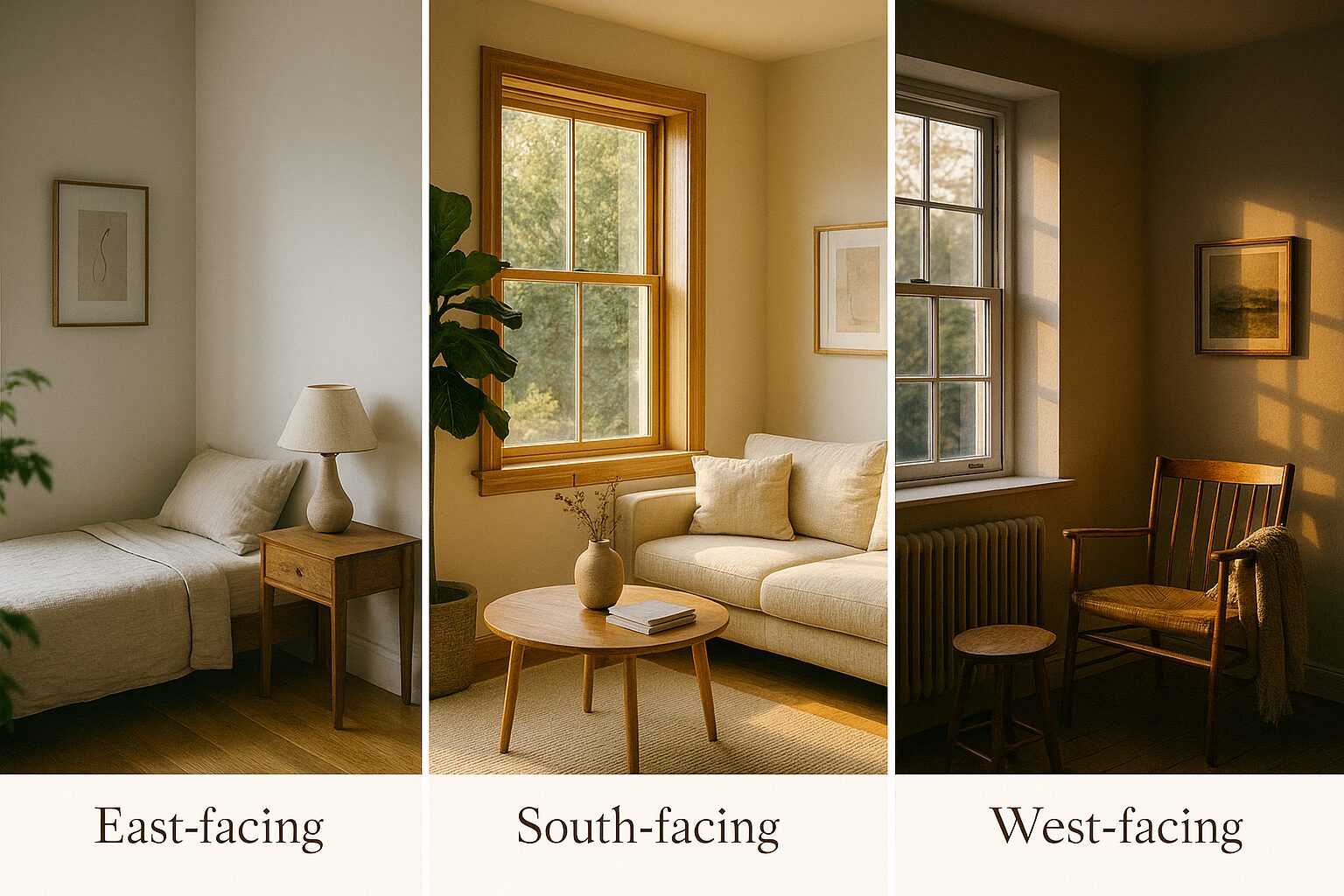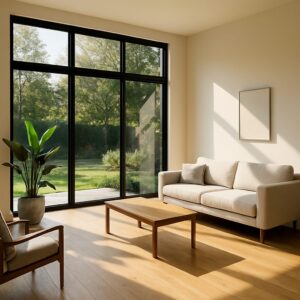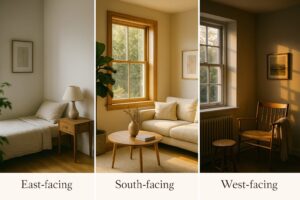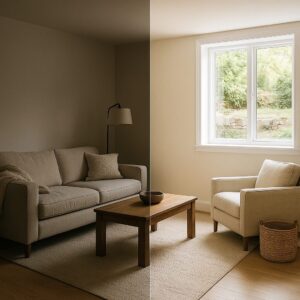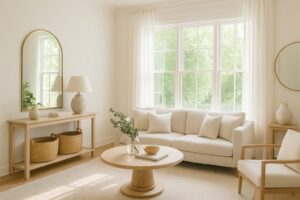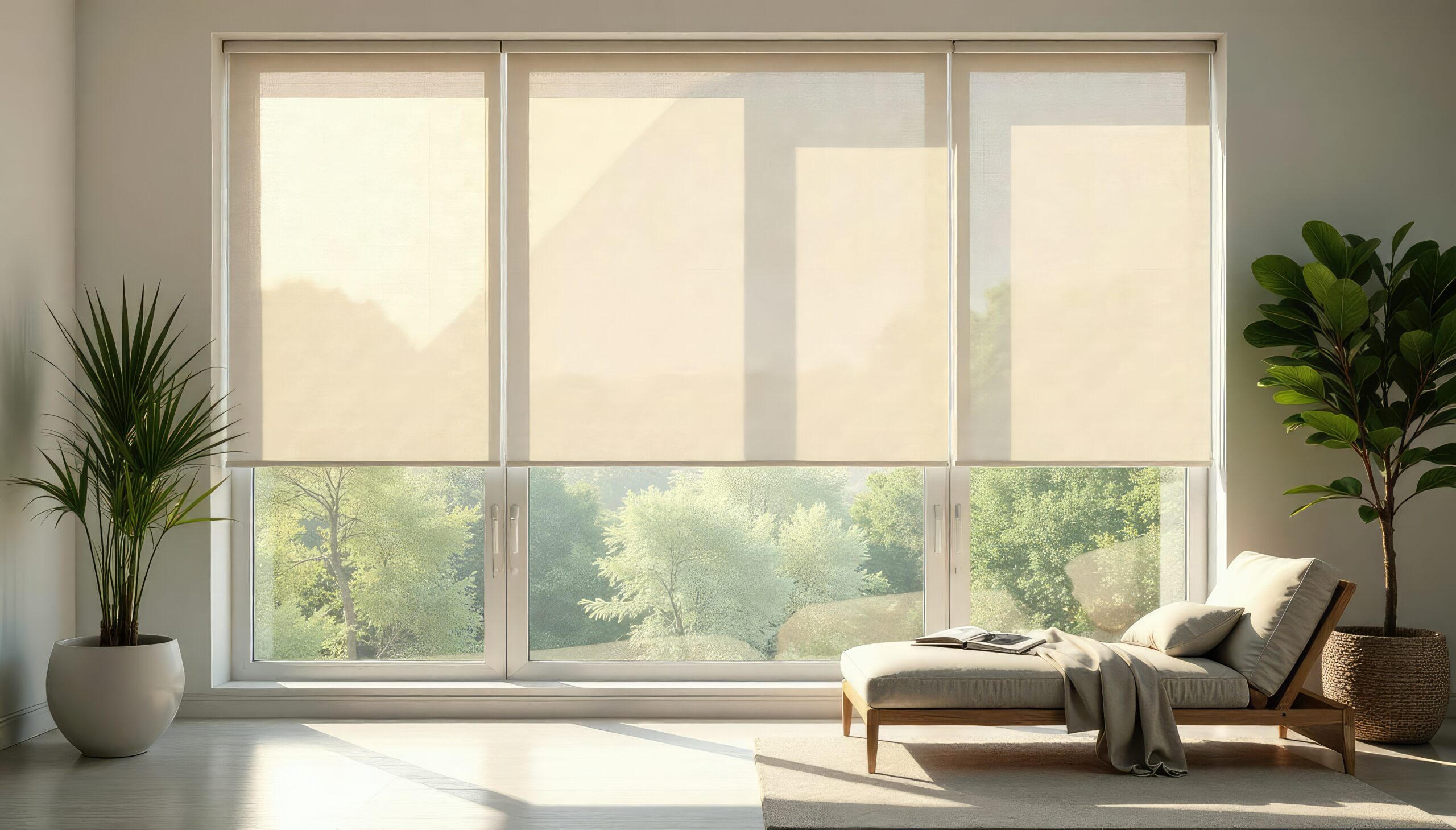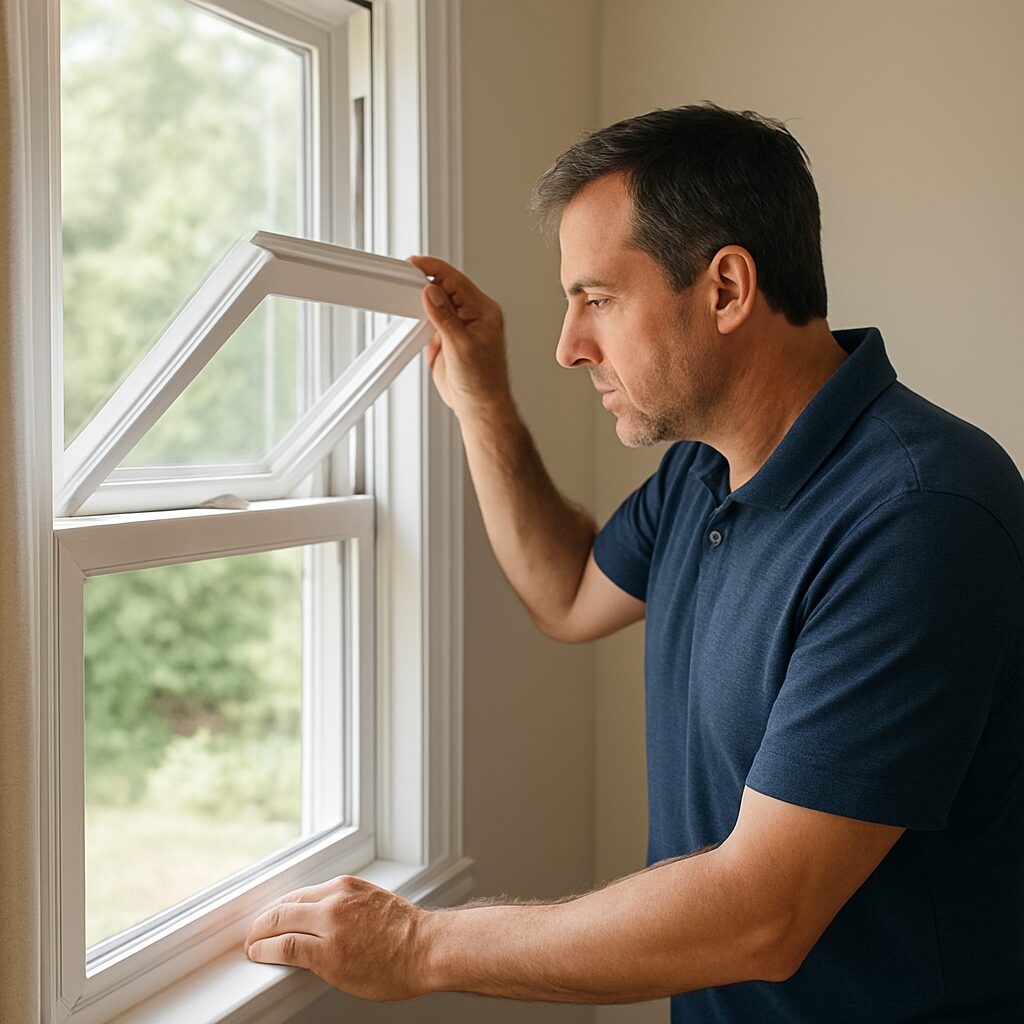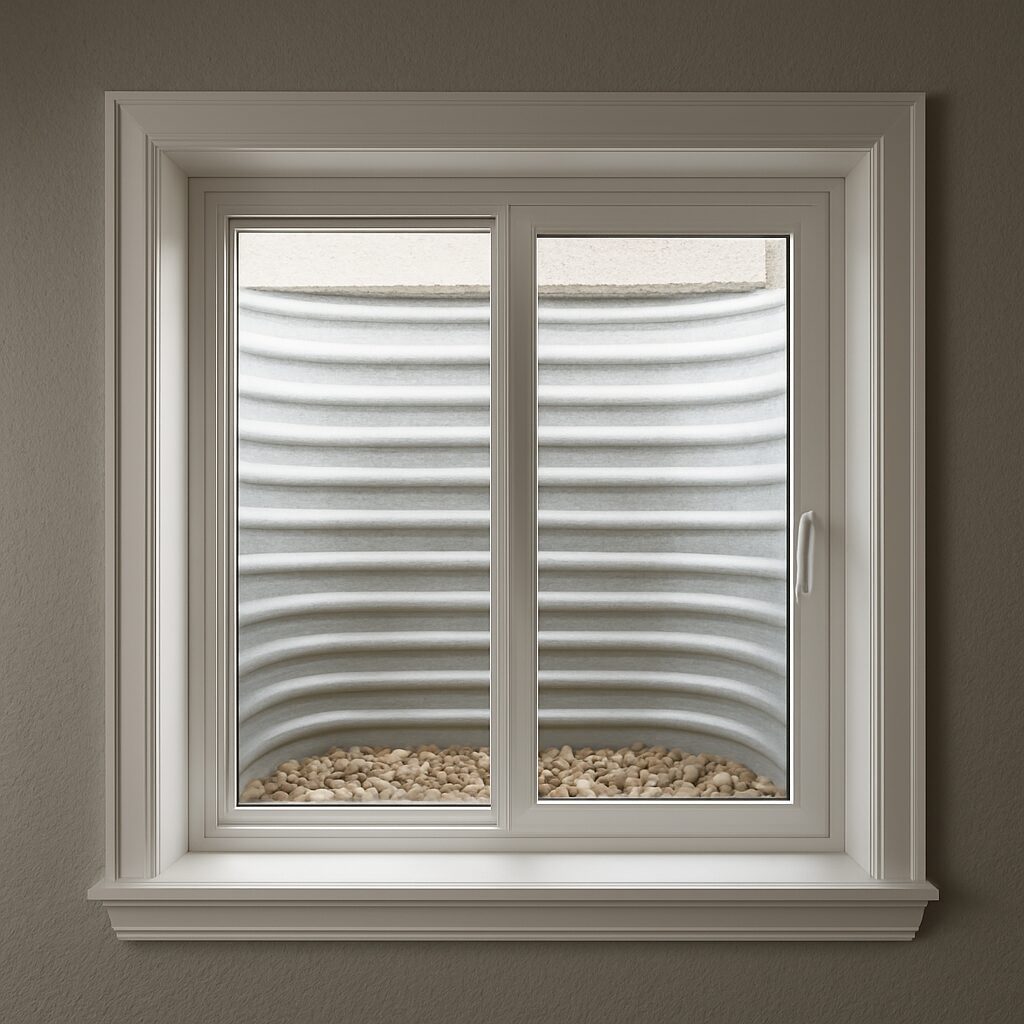Brighten Up: How Windows Affect Natural Light in Your Home
This comprehensive guide explores how strategic window choices can transform your home’s natural light—and your daily well-being. We’ll dive into the science behind why sunlight matters for your health, examine how window size, style, and placement control the light in your space, and discover how even forgotten areas like basements can be brightened. Whether you’re planning a renovation or simply want to maximize your existing windows and invite more natural light into your home, this post provides practical insights to help you create a brighter, more uplifting home environment.
Table of Contents
- Introduction: Let the Light In
- The Science (and Psychology) of Sunlight Indoors
- How Windows Control Natural Light
- Light in Forgotten Spaces: Basements & Lower Levels
- Design Tips to Maximize Indoor Light
- When It’s Time for a Change
- Conclusion: A Brighter Home, a Brighter You
Introduction: Let the Light In
Picture this: you walk into a sun-drenched room where golden light streams through expansive windows, instantly lifting your spirits and making the entire space feel alive. Now imagine the opposite—a dim, shadowy room that feels cramped and uninviting, no matter how beautifully it’s decorated.
The difference? It’s all about the windows.
Windows are far more than architectural features or design elements—they’re the gatekeepers of natural light in your home. They determine whether your morning coffee feels energizing or sluggish, whether your home office inspires productivity or makes you want to crawl back into bed, and whether your living spaces feel spacious and welcoming or small and confined.
This post explores the powerful relationship between your windows and the natural light that shapes your daily experience at home. We’ll uncover how smart window choices can boost your mood, enhance your home’s aesthetic appeal, and even improve your overall wellness—while poor window planning can leave you literally and figuratively in the dark.
The Science (and Psychology) of Sunlight Indoors
Natural light isn’t just pleasant—it’s essential for human health and happiness. When sunlight enters your home, it triggers a cascade of positive effects that go far beyond simple illumination.
The Wellness Connection
Mood and Mental Health: Exposure to natural light stimulates the production of serotonin, often called the “happiness hormone.” This boost in serotonin levels can help combat depression, reduce anxiety, and create an overall sense of well-being. It’s no coincidence that people often feel more optimistic on sunny days.
Energy and Productivity: Natural light helps regulate your circadian rhythm—your body’s internal clock. When you’re exposed to bright light during the day, especially in the morning, your brain gets the signal to stay alert and focused. This translates to higher energy levels and improved productivity throughout the day.
Sleep Quality: Paradoxically, getting enough natural light during the day actually helps you sleep better at night. Proper light exposure helps your body produce melatonin at the right times, leading to more restful sleep and better overall health.
Did You Know? Seasonal Affective Disorder (SAD) affects millions of people, particularly during darker winter months. Creating brighter interior spaces through strategic window placement can significantly help combat these symptoms and maintain mental wellness year-round.
The takeaway is clear: the amount and quality of natural light in your home directly impacts how you feel and function every single day. Your windows are the primary delivery system for this essential element of healthy living.
How Windows Control Natural Light
Not all windows are created equal when it comes to bringing natural light into your home. Three key factors determine how much sunlight your windows deliver: size, style, and placement.
Size: Bigger Really Is Brighter
The most obvious factor in natural light is window size—larger panes simply allow more light to enter your space.
Picture Windows offer unobstructed views and maximum light transmission. Without mullions or dividers breaking up the glass, these expansive windows flood rooms with natural light while creating stunning focal points.
Bay and Bow Windows not only increase your window area but also capture light from multiple angles. The angled design means you’re collecting sunlight throughout more hours of the day, while the extended sill provides additional space for plants or decor.
Floor-to-Ceiling Options maximize both light and the sense of space. These dramatic windows make rooms feel larger and brighter while creating seamless connections between indoor and outdoor environments.
Style: How Design Affects Light Flow
The style of your windows significantly impacts how much light actually makes it into your home.
Casement Windows open completely, allowing maximum airflow and unobstructed light when open. Their simple design typically features larger glass areas with minimal frame interference.
Double-Hung Windows are classic and versatile, but their horizontal divider (where the two sashes meet) can block some light. However, their timeless appeal and functionality often make this trade-off worthwhile.
Slider Windows offer good light transmission and are particularly effective in contemporary designs where clean lines are prioritized.
When choosing window styles, consider the glass-to-frame ratio. Windows with thinner frames and larger glass areas will always deliver more natural light than those with chunky frames or multiple dividers.
Placement: Direction Matters
Where you place your windows is just as important as what type you choose. Each cardinal direction offers different light characteristics throughout the day.
North-Facing Windows provide consistent, even light that remains relatively stable throughout the day. This makes them ideal for home offices, art studios, or any space where you want to avoid harsh shadows and glare.
South-Facing Windows are the powerhouses of natural light, receiving direct sunlight for most of the day. These windows are perfect for living areas where you want maximum brightness and warmth.
East-Facing Windows capture beautiful morning light, making them perfect for bedrooms, breakfast nooks, and home offices where you want energizing light to start your day.
West-Facing Windows deliver dramatic afternoon and evening light. While this can create stunning golden hour effects, be mindful of potential glare and heat during summer months.
Strategic High Windows like clerestory windows and skylights bring in light from above, providing all-day ambient lighting without sacrificing wall space or privacy. These are particularly effective in hallways, bathrooms, and rooms where traditional window placement might not work.
Light in Forgotten Spaces: Basements & Lower Levels
Many homeowners resign themselves to dark, dreary basements, but these spaces have incredible potential when you bring in natural light. With the right window strategy, your lower level can become a bright, inviting extension of your home.
The Transformation Power of Basement Windows
Egress Windows: Safety Meets Sunshine Installing egress windows in your basement serves a dual purpose. While primarily required for safety (providing emergency exit routes), these larger windows dramatically increase natural light in spaces that were previously relegated to artificial lighting only.
Benefits of upgrading basement windows include:
- Improved Safety: Meeting building codes for emergency egress
- Enhanced Livability: Transforming dark storage areas into usable living spaces
- Increased Home Value: Adding square footage that actually feels like part of your home
- Better Air Quality: Improved ventilation reduces moisture and staleness
Before and After: The Basement Makeover
Consider the dramatic difference: a basement with small, high windows that barely let in any light versus one with properly sized egress windows that flood the space with natural brightness. The transformation goes beyond just lighting—suddenly your basement feels like a legitimate part of your home rather than a forgotten underground space.
Many homeowners are surprised to learn that even existing small basement windows can often be enlarged to dramatically improve natural light. This renovation can turn a dingy storage area into a bright family room, home office, or guest suite.
Design Tips to Maximize Indoor Light
Once you have the right windows in place, smart design choices can amplify their natural light benefits throughout your home.
Reflective Surfaces and Light Colors
Mirror Magic: Strategically placed mirrors can double the apparent light in a room by reflecting sunlight deeper into your space. Place mirrors opposite or adjacent to windows to bounce light around the room effectively.
Light-Colored Walls: Paint colors significantly impact how light or dark a room feels. Whites, creams, and light neutrals reflect natural light, making spaces feel brighter and larger. Even if you prefer darker colors, consider using light shades on walls that receive direct sunlight.
Glossy Finishes: Semi-gloss or satin paint finishes reflect more light than flat paints, subtly increasing the brightness in your rooms.
Furniture and Window Treatments
Let Windows Breathe: Avoid placing large furniture pieces directly in front of windows. Even if the furniture doesn’t completely block the light, it can create shadows and prevent light from flowing freely throughout the room.
Minimal Window Treatments: Heavy drapes and dark blinds can significantly reduce natural light. When privacy isn’t a concern, leave windows uncovered. When treatments are necessary, opt for light-colored, sheer, or adjustable options that can be fully opened during the day.
Light-Colored Furniture: Just like walls, furniture in lighter colors will reflect rather than absorb natural light, contributing to an overall brighter atmosphere.
Creative Interior Solutions for natural light
Glass Interior Doors: Replace solid doors with glass-paneled options to allow light to flow between rooms. This is particularly effective between hallways and well-lit rooms.
Interior Windows: Consider adding interior windows between rooms to share natural light across your home. This works especially well between kitchens and dining rooms or to bring light into interior hallways.
Open Floor Plans: When possible, removing walls between spaces allows natural light from windowed areas to illuminate the entire living space.
When It’s Time for a Change
Sometimes, despite your best design efforts, your current windows simply aren’t delivering the natural light your home needs. Recognizing when it’s time for an upgrade can make the difference between living in adequate lighting and truly brightening your daily experience.
Signs Your Windows Need an Upgrade
Consistently Dim Rooms: If you find yourself turning on lights during the day in rooms with existing windows, those windows aren’t doing their job effectively.
Small, Outdated Windows: Older homes often feature smaller windows that made sense for different heating and cooling technologies but now feel inadequate for modern living.
Poor Window Placement: Windows placed too high, too low, or in locations that don’t capture optimal light throughout the day may need to be relocated or supplemented with additional windows.
Energy Inefficiency: Old windows that let in light but also let out heat in winter and cool air in summer may need replacement with modern, energy-efficient options that provide light without compromising comfort.
The Modern Window Advantage
Today’s window technology offers the best of both worlds: maximum natural light transmission with excellent energy efficiency. Modern windows can dramatically improve both how your home looks and how it feels while reducing energy costs.
Advanced glass coatings allow natural light to enter while blocking harmful UV rays and managing heat gain. This means you can enjoy bright, sun-filled rooms without worrying about fading furniture or excessive cooling costs.
If you’re planning a renovation or want to significantly increase the daylight in your home, working with experienced professionals can help you choose and install the right windows for every space, ensuring optimal light while maintaining energy efficiency and aesthetic appeal.
natu
Conclusion: A Brighter Home, a Brighter You
Your windows do more than provide views or ventilation—they fundamentally shape how your home feels and how you feel in it. The right windows, properly placed and thoughtfully integrated into your home’s design, can transform dark, cramped spaces into bright, welcoming environments that boost your mood, energy, and overall well-being.
Whether you’re dealing with a gloomy basement that could become a vibrant family space, a dim kitchen that needs morning light, or simply want to maximize the natural light throughout your home, the solution often starts with seeing your space—and your windows—in a new light.
Natural light isn’t a luxury; it’s an essential element of healthy, happy living. Every day you spend in a well-lit home is a day that starts brighter, feels more energetic, and ends more peacefully.
Ready to brighten up your home and transform how you experience your living space? Let’s talk about windows that will bring more light—and more life—into every room.

